

This is the first photograph I took as I entered the area. It shows the evacuation of the last residents of Kfar Darom. In the photo, a resident is forcefully removed from his home as his young child is watching. The soldier on the left covering her face with her hands and silently crying completes the composition.

Both these photos reflect the contrasts and opposing extremes seen everywhere. One photo exhibits the compassion and the human warmth a soldiers gives a lonely child who lost her parents. In the other, a soldier protecting himself with a plastic shield, looking indifferent to the events taking place around him.

During the evacuation of the settlers who were entrenched in the synagogue of Kfar Darom, many soldiers were subjected to acid "showers." This photo depicts – a bit humouredly – our fearless troops.
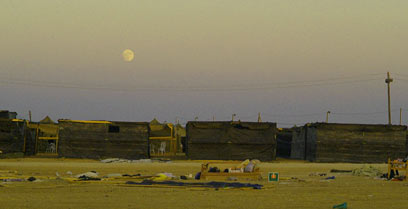

I left Kfar Darom and traveled to Neve Dekalim, where the evacuation of thousands of girls from the main synagogue was reaching its final stage. I was greeted by the sounds of sobbing girls who were soft praying. You can see the word "fragile" on one of the girls' shirts.

A tearful soldier. The tears trickle down his face but he is trying to wipe them. He does not look away. For a long time he just stood there crying.


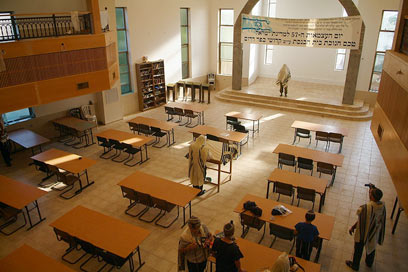

The evacuation of Gadid was resumed early Friday. A girl leaning on the vehicle which will take her family away from the area, trying to say a quick prayer in what used to be her home. Devoutly she saying the verses and does not move when her mother gathers her siblings into the car.
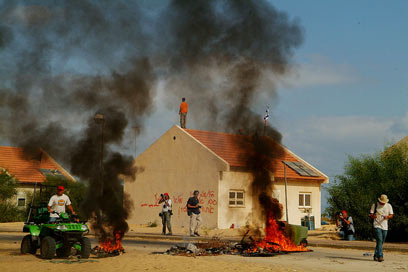
Media everywhere, filling the frame with just one boy standing alone on the roof. Journalists and photographers from all over the world flooded the area. Most were disappointed when the pullout was completed without incidents.
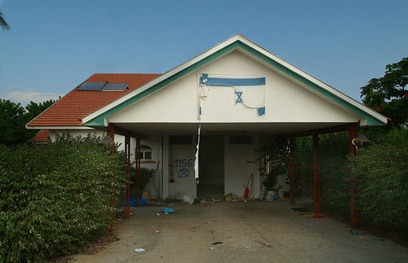
The home of the Fisheimers of Ganei Tal – who happen to be related to me – stands abandoned. It was completely emptied and the Israeli flag which hung there for decades seemed torn and battered. This photo embodies the schism created between the government and its defeated citizens.
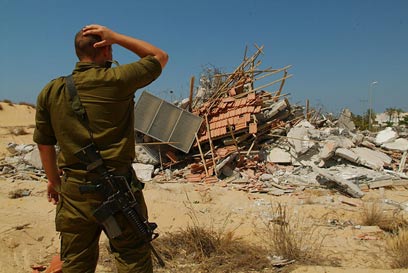
A week after the evacuation and destruction works were completed, I traveled back to this magnificent area. I met a soldier who could not hide his shock in front of the Neve Dekalim house where he used to יenjoy many Shabbat meals.















